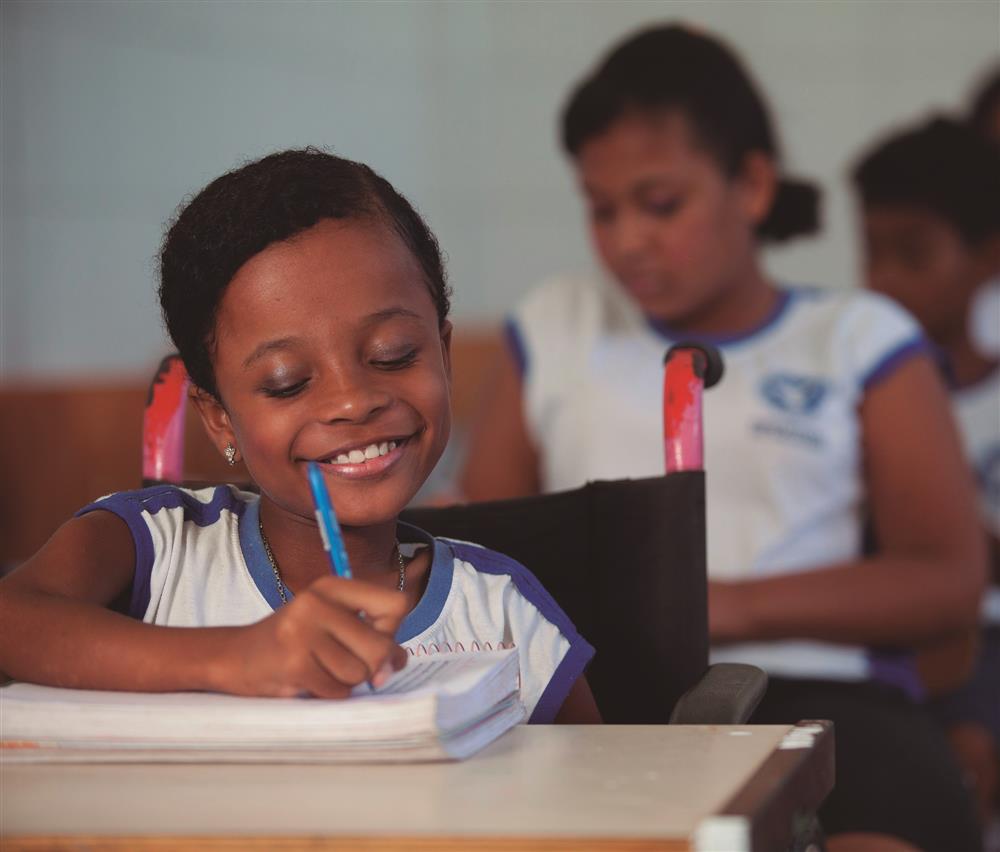Brazil’s billion dollar National Plan for Inclusive Education
- Solution
- National Plan of Rights of Persons with Disabilities ‘Living without Limit’ of 2011, Secretariat for Human Rights of the Presidency and 15 federal ministries, Brazil
- Organization
- Presidency of Brazil, Secretariat of Human Rights
- Country of Implementation
- Brazil
- Region
- Latin America & Caribbean
- Subregion
- South America
- In cooperation with
- 15 federal ministries
- First published
- 31.01.2016

Solution details
People
“‘Living without Limit’, though a young programme, is a milestone for the political landscape of persons with disabilities at the federal level of Brazil.” Mr. Moisés Bauer, President, CONADE
In Brazil, although there has been increasing access of children with disabilities to regular public schools over the last decades, the provision of reasonable accommodation and support remains a challenge. To address these issues, the Plan ‘Living without Limit’ was elaborated by 15 ministries and the National Council on the Rights of Persons with Disabilities (CONADE). Launched in 2011 by Presidential Decree No. 7612, the Plan consolidated actions of the 2008 National Policy for Special Education: Perspective of Inclusive Education, under which all persons with disabilities have the right to attend regular schools. Since 2012 school managers refusing enrolment are fined. In 2015 the Law of Inclusion of Persons with Disabilities enshrined the right of persons with disabilities to an education as a right to an Inclusive Education system, and it mandated the government’s responsibility to implement such a system at all levels. The same law also prohibits private schools to reject pupils with disabilities. The 2011 Brazilian National Plan of Rights of Persons with Disabilities ‘Living without Limit’ aimed to implement new initiatives and intensify existing policies for the benefit of persons with disabilities, addressing issues of education, health care, social inclusion, and accessibility. Implemented by 15 ministries, the various measures included accessible classrooms and transportation, access to technical training, the promotion of accessibility in higher education, bilingual education, as well as a Continuous Cash Benefit School Programme to help schools to locate out-of-school children with disabilities and to enrol them in school. In the four-year period of 2011 to 2014, the National Plan invested $1.9 billion (R$7.6 bilhões).
Problems Targeted
Inclusive Education cannot be provided in a vacuum. Rather, it takes many forms of support, including physically accessible education infrastructures, school transport, assistive devices, knowledgeable teachers, and – importantly – cash support for deprived parents and their out-of- school children. In a comprehensive and ambitious manner, Brazil’s National Plan ‘Living without Limit’ addressed all these issues.
Solution, Innovation and Impact
The Brazilian National Plan of Rights of Persons with Disabilities ‘Living without Limit’ of 2011 is a national legally-binding policy that covers four areas: access to education, health care, social inclusion, and accessibility. Measures in basic education include: accessible school infrastructure and equipment, teacher training, accessible school buses, and the Continuous Cash Benefit School Programme. In higher education, accessibility centres are established at higher education institutions. Measures on accessibility include: a National Programme for Innovation in Assistive Technology, a National Centre of Reference in Assistive Technology, and access to a credit line for the acquisition of assistive technology products. Measures and their targets are defined by a Steering Committee coordinated by the Secretariat for Human Rights, while a Joint Interministerial Group promotes coordination among ministries. Union budget allocations are earmarked each year. Interministerial collaboration The Plan brings together various ministries in addition to the Ministry of Education to directly and indirectly improve access to mainstream education. Stopping invisibility The Continuous Cash Benefit School Programme is a particular good practice as it allows school staff to actively search for children who are out of school, assesses the situation of families, and provides them with the means to bring their children to school. Enrolment of children with disabilities in regular schools increased from 145,141 in 2003 (29%) to 698,768 in 2014 (79%). In 2014 there were 103,473 regular schools with students with disabilities, and 84% of all public schools had students with disabilities enrolled (compared to 50% in 2003). In 2012, 23,400 students with disabilities became new beneficiaries of the Continuous Cash Benefit, reaching 329,800 beneficiaries in total – 70% of whom are now in school.
Funding, Outlook and Transferability
Brazil’s National Plan ‘Living without Limit’ of 2011 can be transferred to other countries that are interested in streamlining actions towards disability inclusion. Brazil presented at UNESCO’s 2015 conference in a session on “Inclusive Policies at the National Level.”
Media
Related information
- Connections
- 2
-
Organization
- People